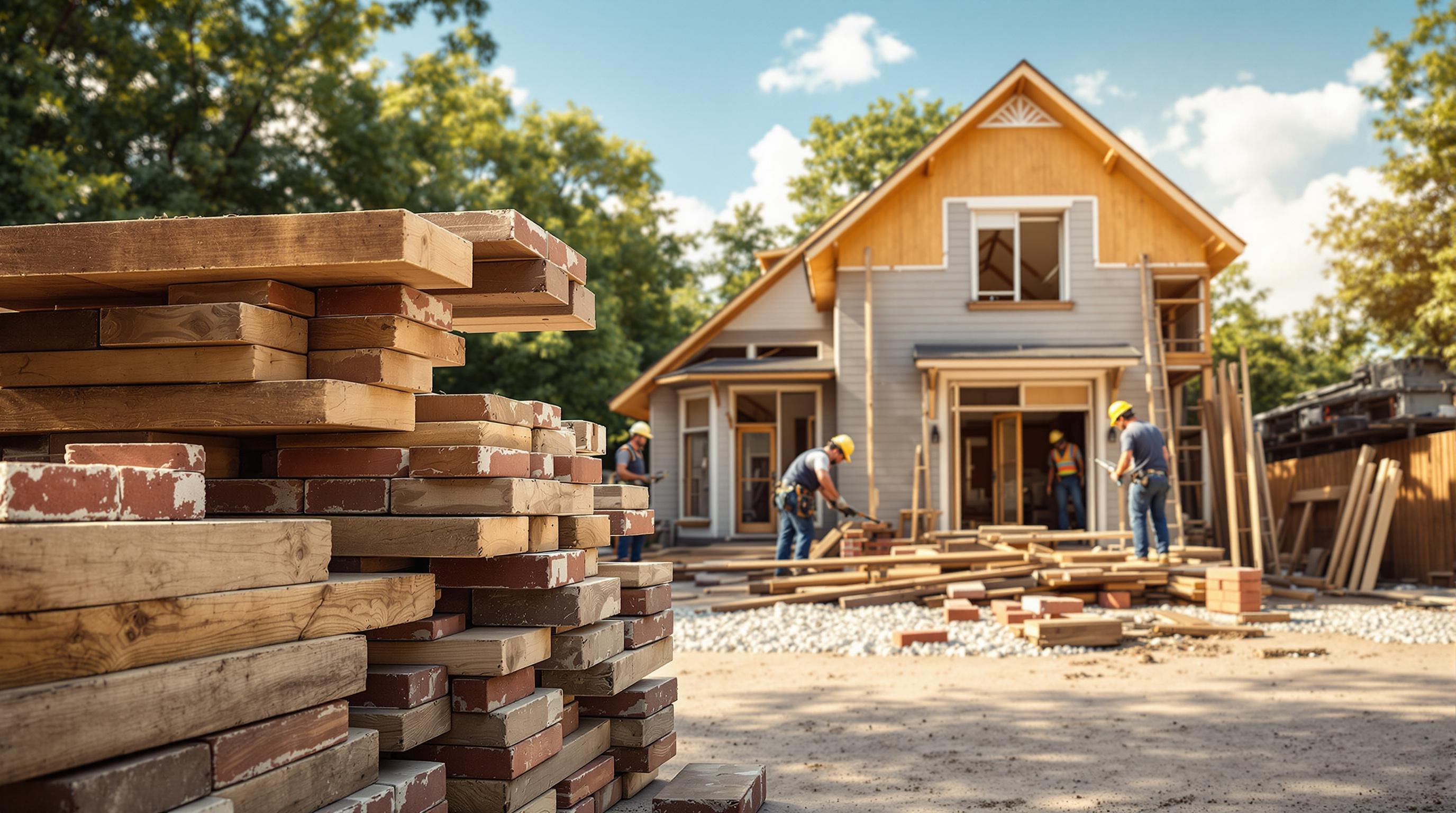Deconstruction is a growing trend in Austin’s real estate market, offering an alternative to demolition that saves materials, reduces waste, and aligns with the city’s zero-waste goals. Here’s what you need to know:
- What is Deconstruction? Carefully dismantling buildings to salvage reusable materials like hardwood floors, fixtures, and structural wood.
- Benefits: Reduces landfill waste, saves money through tax deductions and lower disposal fees, and supports local jobs and businesses.
- Austin’s Zero-Waste Efforts: Deconstruction helps the city achieve its sustainability goals by promoting recycling and material recovery.
- Steps Involved: Assess salvageable materials, secure permits, dismantle systematically, and document everything for tax purposes.
- Resources for Property Owners: Compare costs with demolition, find skilled contractors, and plan how to use salvaged materials in new projects.
Deconstruction not only benefits the environment but also offers financial and community advantages. It’s a smarter way to tackle building removal in Austin.
Can’t Believe They Can Recycle Buildings! How De …
Advantages of Deconstruction
Cutting Down on Waste
Deconstruction helps reduce the waste generated during building removal projects in Austin by carefully taking apart structures to recover usable materials. This approach keeps more debris out of landfills and promotes eco-friendly building practices. These efforts can also lead to cost savings for property owners.
Saving Money and Getting Tax Deductions
Deconstruction isn’t just good for the planet – it can also save money. Homeowners who donate high-quality salvaged materials to approved non-profits may qualify for tax deductions based on the donated items’ market value. Plus, selling reclaimed materials and paying less in disposal fees compared to traditional demolition methods can further trim project expenses.
Supporting the Local Community
Deconstruction has a positive ripple effect on the community. It creates job opportunities, provides reclaimed materials to local organizations, and supports small businesses. These efforts contribute to community growth while helping preserve Austin’s one-of-a-kind architectural character.
Steps in Deconstruction
Project Setup
Start by conducting a thorough material assessment to pinpoint items that can be salvaged, like hardwood flooring or vintage fixtures. Make sure to secure the necessary permits and schedule inspections for potential hazards such as asbestos or lead paint. Develop a detailed project schedule that includes utility disconnections, equipment setup, material storage, organizing salvage logistics, and planning for waste disposal. Once everything is in place, you’re ready to move on to the dismantling phase.
Taking Apart the Building
Work systematically from the top of the building down to the foundation. Begin by carefully removing high-value items such as fixtures, appliances, doors, windows, trim, cabinets, built-ins, and flooring. Afterward, proceed to dismantle structural components like roof framing, wall assemblies, floor joists, subflooring, and the foundation. Be sure to document the process with photos and detailed notes for future reference.
After Deconstruction
Once the building is dismantled, sort the salvaged materials by type and condition. Keep records of quantities, conditions, donation receipts, and transport details. This step ties into the documentation gathered during the dismantling process. Collaborate with a qualified appraiser to establish the fair market value of donated materials for tax purposes.
sbb-itb-4c99469
Austin’s Deconstruction Resources
Getting Permits
Once your project is planned, the next step is obtaining the necessary permits. Permits and an understanding of local rules are crucial for any deconstruction project in Austin. Start by reaching out to the Development Services Department to determine which permits you’ll need. This process involves reviewing your project details, preparing a site plan, and, for older buildings, completing an environmental assessment. Connecting with city officials early can help ensure everything is in order and make the permitting process smoother.
Guide for Property Owners
Cost Analysis
Compare the costs of deconstruction with traditional demolition by getting detailed estimates. These should account for labor, potential salvage value, and available tax incentives. A thorough breakdown will help you understand the financial aspects of each option.
Finding Contractors
Austin Local Team helps connect property owners with skilled deconstruction experts. When choosing a contractor, keep these points in mind:
- Check credentials: Make sure they have proper licensing, insurance, and experience with similar projects.
- Look at their track record: Ask for references and examples of completed deconstruction work.
- Focus on material preservation: Verify that they know how to handle and preserve reusable materials.
- Review timelines: Get a clear project schedule with milestones to ensure timely completion.
Once you’ve chosen a dependable contractor, shift your attention to getting the most value out of salvaged materials.
Working with Salvaged Materials
Using salvaged materials in new construction requires careful planning for storage, compliance, and design. Here’s how property owners can make the most of reclaimed items:
- Evaluate materials: Inspect the condition and determine how they can be reused effectively.
- Plan storage: Store climate-sensitive items safely to prevent damage.
- Meet building codes: Ensure reclaimed materials comply with current construction standards.
- Collaborate on design: Work closely with architects to integrate salvaged elements in a way that supports structural integrity and enhances the design.
Commonly reclaimed items include hardwood flooring, historic doors, timber beams, and bricks or stones, all of which can add distinctive character to your project.
Conclusion
Main Points
Deconstruction plays a key role in Austin’s zero-waste goals. It reduces landfill waste and creates economic opportunities through material reuse and tax benefits. By carefully dismantling structures, it also helps preserve historical features while aligning with local environmental objectives.
Choosing deconstruction offers several advantages:
- Reduces construction waste
- Boosts local reuse markets
- Protects architectural heritage
These highlights show the importance of working with knowledgeable professionals during the process.
Austin Local Team Services
Austin Local Team helps property owners connect with experts in sustainable deconstruction. Their offerings include:
- Expert Matchmaking: Pairing clients with real estate agents skilled in deconstruction
- Property Evaluation: Free assessments to determine deconstruction potential and salvage value
- Resource Network: Connections to reliable local contractors and specialists
- Market Insights: Current updates on Austin’s sustainable building trends
Property owners can schedule a personalized consultation to explore deconstruction options and get connected with experienced professionals. This service supports Austin’s sustainability efforts, ensures regulatory compliance, and enhances project outcomes.






